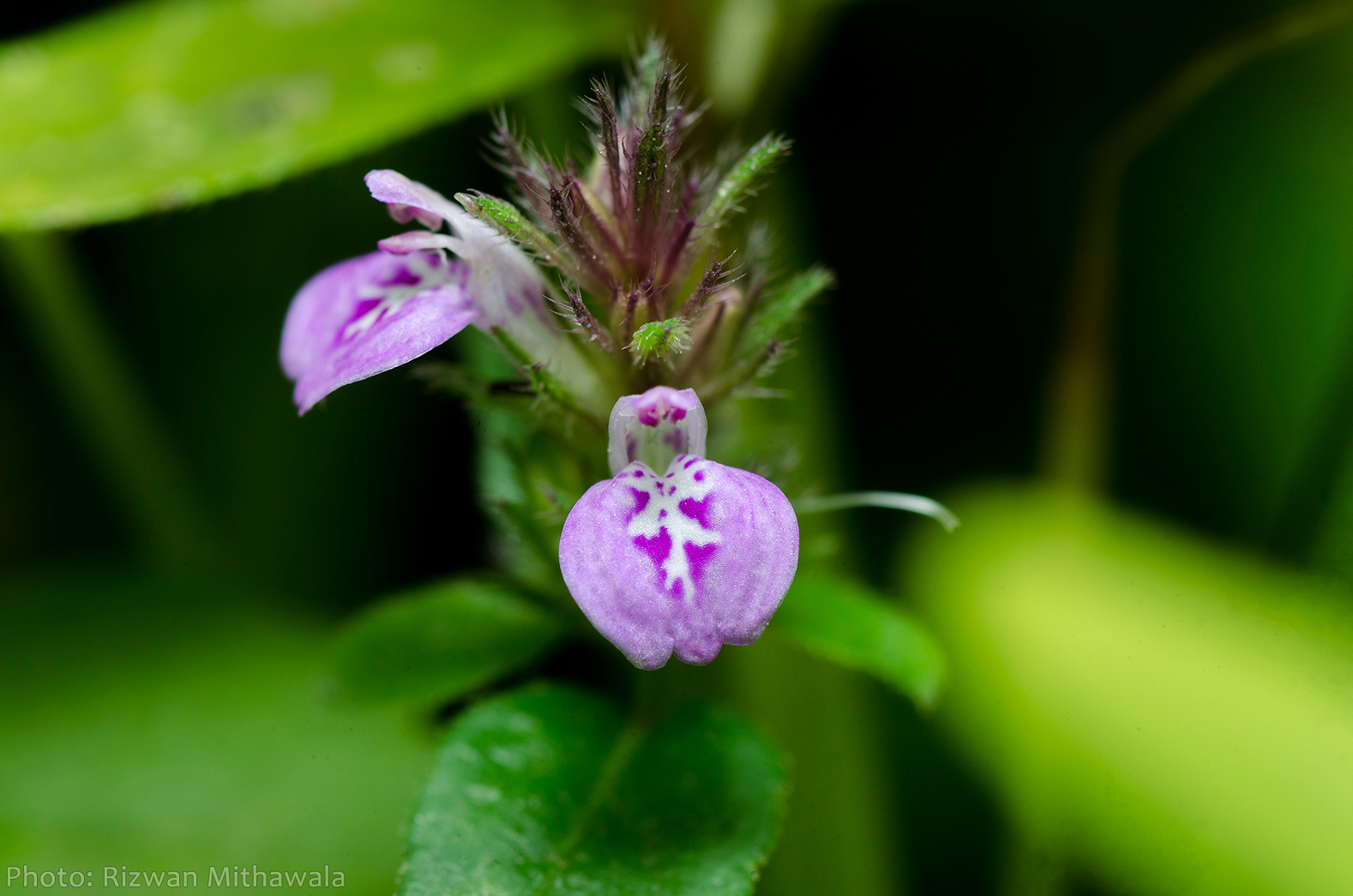
The tiny, 6mm long flowers of Water Willow Justicia procumbens sport markings that serve as nectar guides to pollinators.
“Thy centuries follow each other perfecting a small wild flower,” wrote the Nobel laureate Rabindranath Tagore in his poem Endless Time. Wildflowers are a metaphor for all existence – fleeting, yet timeless. Swaying in all their coquettish glory, trying their best to invite pollinators in that brief window of time, they offer pure delight to the human soul. To begin with, all one needs to do is take a moment to stand and stare, and let the eyes be enamoured. Over months and years, the eyes get trained to look for beauty. Once the ‘visual nectar’ is found, the legs come to a halt.
This is not the first time that the Water Willow flowers have stopped me in my tracks. Hiking across Maharashtra’s Western Ghats, I have beheld their fleeting beauty several times, on occasions, losing myself in besotted admiration, only to realise minutes later that I have been left alone with my muse, my co-trekkers nowhere in sight. But the Sanjay Gandhi National Park is a familiar landscape for me, a home ground of sorts. Traversing its forests and hills in pursuit of butterflies, I stop to stand and stare very often. A wondrous distraction – usually a wildflower – awaits at the turn of a trail or on a moss-covered hill slope. I stop. Going on my knees, I look closely and marvel at the floral architecture, wondering which insect would be the tailor-made pollinator. If I am alone, I lose the sense of time. The butterflies, I know, will wait for me; and I will observe and photograph them to my heart’s content, till it starts getting dark and my instincts tell me a leopard might be prowling somewhere not very far.
(In Praise of Wildflowers is a blog series that explores the beauty of wildflowers and their interactions with pollinators, leaf and petal munchers, predators and nectar thieves.)
——————————————————————————————————————————————————————
Rizwan Mithawala is a Conservation Writer & Editor with the Wildlife Conservation Trust and a Fellow of the International League of Conservation Writers.
——————————————————————————————————————————————————————
Disclaimer: The author is associated with Wildlife Conservation Trust. The views and opinions expressed in the article are his own and do not necessarily reflect the views and opinions of Wildlife Conservation Trust.
Related Links
